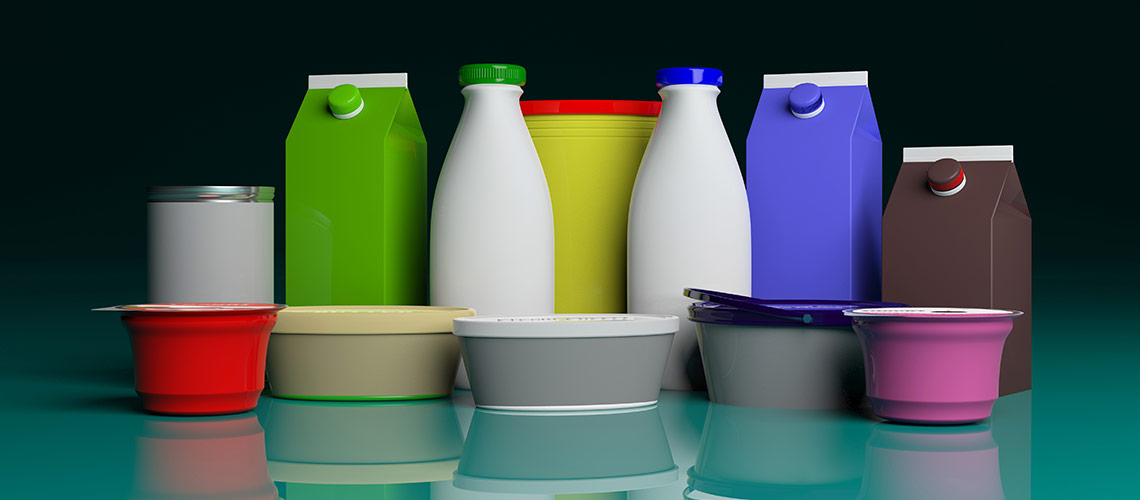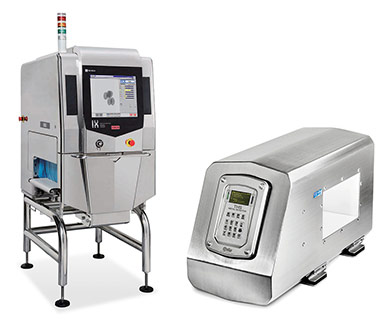Increases in product SKU are challenging for manufacturers who want to balance changing and increasing product variety with operational performance. Below is a Q&A with Todd Grube, Heat and Control Inspection Systems Product Manager, North America, on how different product types and sizes on the same line affect foreign object and quality control strategies.

 Metal detectors and X-ray systems both utilize an “aperture” through which product must pass to be inspected. Sizing the equipment is primarily based on the maximum product dimensions to be inspected. The type(s) of product will also determine the best technology to be utilized. For metal detection, manufacturers must determine whether their product(s) require a single frequency unit, multi-frequency, or multi-spectrum technology exclusive to CEIA® metal detectors; for X-ray systems, the power of the generator and the diode sensor pitch.
Metal detectors and X-ray systems both utilize an “aperture” through which product must pass to be inspected. Sizing the equipment is primarily based on the maximum product dimensions to be inspected. The type(s) of product will also determine the best technology to be utilized. For metal detection, manufacturers must determine whether their product(s) require a single frequency unit, multi-frequency, or multi-spectrum technology exclusive to CEIA® metal detectors; for X-ray systems, the power of the generator and the diode sensor pitch.
Density and product thickness are both key factors for X-ray inspection. Typically, the higher the density or the taller the product (or wider the width in a side shoot X-ray system), the more X-ray power is required for proper inspection. As product density and/or thickness increases, the likelihood for reduced performance also increases. With metal detectors, the physical size and orientation of wet (conductive) products does impact inspection results. As conductivity increases, due to moisture, salt/minerals, and other variables, so does the product signal and the difficulty to find smaller metals. Also, a given product inspected with long side leading can produce different results than if it were presented short edge leading. Metal detectors working with a spectrum of frequencies can greatly improve the masking of this product effect, eliminating false rejects and often allowing for detection of smaller pieces of metal.
Teaching the equipment involves passing known good product so the unit can “learn” the signal or image it creates. Deviations from that baseline are considered a rejection. Most metal detectors and X-ray systems today can be taught with only one or two product passes. However, with product that is more difficult to inspect or product that can vary from one to the next, passing more product in the autolearn process will generally produce a more accurate setup as the equipment can include a range of what is acceptable product.
CEIA metal detectors have up to 500 product presets and Ishida IX series X-ray systems have up to 200 presets. After the initial creation and setup of a product preset, changing over from one product to another during production is as simple as a couple keystrokes via the operator interface.
Adding metal detectors to the front of production lines, such as inspecting incoming ingredients, will ensure that no metal contamination enters the process where it could damage equipment and/or be broken down into smaller pieces that may go undetected at the end of line inspection. Also, front of line inspection can typically be accomplished with smaller apertures that have better sensitivity than at the end of line where the aperture size may be much larger to accommodate the packaged product.
Foodservice product packaging is generally larger than retail product packaging so that equipment which was sized for foodservice products will oftentimes be oversized for retail use (see response in question two). This can mean a sacrifice in accuracy compared to equipment geared towards retail sized product. Speeds may also be a factor as foodservice lines typically run a lower package per minute rate than a retail line.
Inspection Systems Product Manager, North America